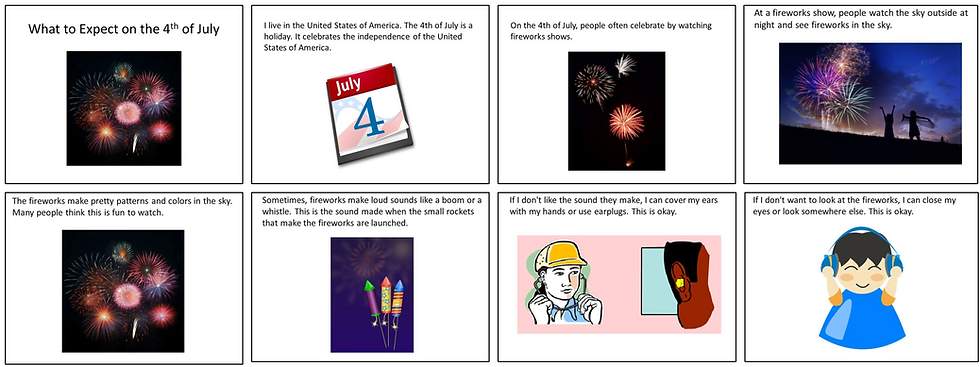The Purpose of Social Stories(TM) Is Not to Change Behavior
- autismhomeschoolsu
- Aug 4
- 3 min read

Click here to purchase this book from bookshop.org, which supports local bookstores!
Have you ever used a social storyTM (often called a “social narrative”) to help your child feel more at ease before a dentist visit, an outing, or a family gathering? If so, you’ve likely seen how powerful these simple stories can be in helping kids understand what to expect in a new or different situation. While many parents and teachers use social narratives to help improve behavior (they can be excellent tools for that!), their purpose goes deeper.
In the early 2000s, when I was working on my teaching certification, I attended a workshop on Social StoriesTM taught by the developer, Carol Gray. My biggest takeaway from the workshop was probably not what you would expect: the purpose of social narratives is not to change behavior.
A social narrative is a short story (often accompanied by pictures) that depicts a social situation that a student may encounter. It may also share expectations for behavior in that situation.
Here's an example that I wrote for my son when he was younger. He would sometimes get upset if we needed to stop for a long red light or a traffic jam, so I made this social story about the situation. Looking back, clip art was very limited at the time! :)

Many families and teachers use social narratives to help with their children's and students’ behaviors because they let students know what behaviors are appropriate in certain situations. While they can be helpful with improving behavior, I believe this is not their primary focus.
What I came away from that workshop with was the idea that a social narrative is to help increase a student’s understanding and reduce their anxiety by letting him or her know what to expect in a situation.
As an example, a teacher in a school where I consulted had a 3rd grade student who would get nervous and start to cry if his mom was ever a few minutes late to pick him up from school (it was a small private school, and the student would wait by the front desk to be picked up). I wrote a social narrative for the student about the reasons why someone might be late, such as traffic, and that the person would likely be there soon to pick him up. While it helped the student’s behavior of crying by the front door of the school, its main purpose was to help reduce his stress and anxiety about the situation*.
Carol Gray states that the goal of social narratives is to “share accurate information using a content, format, and voice that is descriptive, meaningful, and physically, socially, and emotionally safe for the audience.” What I really like about this approach is that it seeks to help the student understand things that may be confusing or stressful, rather than simply trying to make a student “behave.” Here's another example of a social narrative about holiday plans. These are a few sample pages from the full story here.

Social narratives are considered an evidence-based practice for students with autism, but they can be used with other students as well. For more information about the research base for this approach, you can follow this link: https://afirm-modules.fpg.unc.edu/Social-Narratives/content/#/
*As a note, if you have a child or student experiencing signs of anxiety, depression, or any other mental health concern, please consult with a mental health professional. As a teacher, I am not licensed to recommend any interventions for these conditions, so please speak to the appropriate professional if you have questions.




























Comments